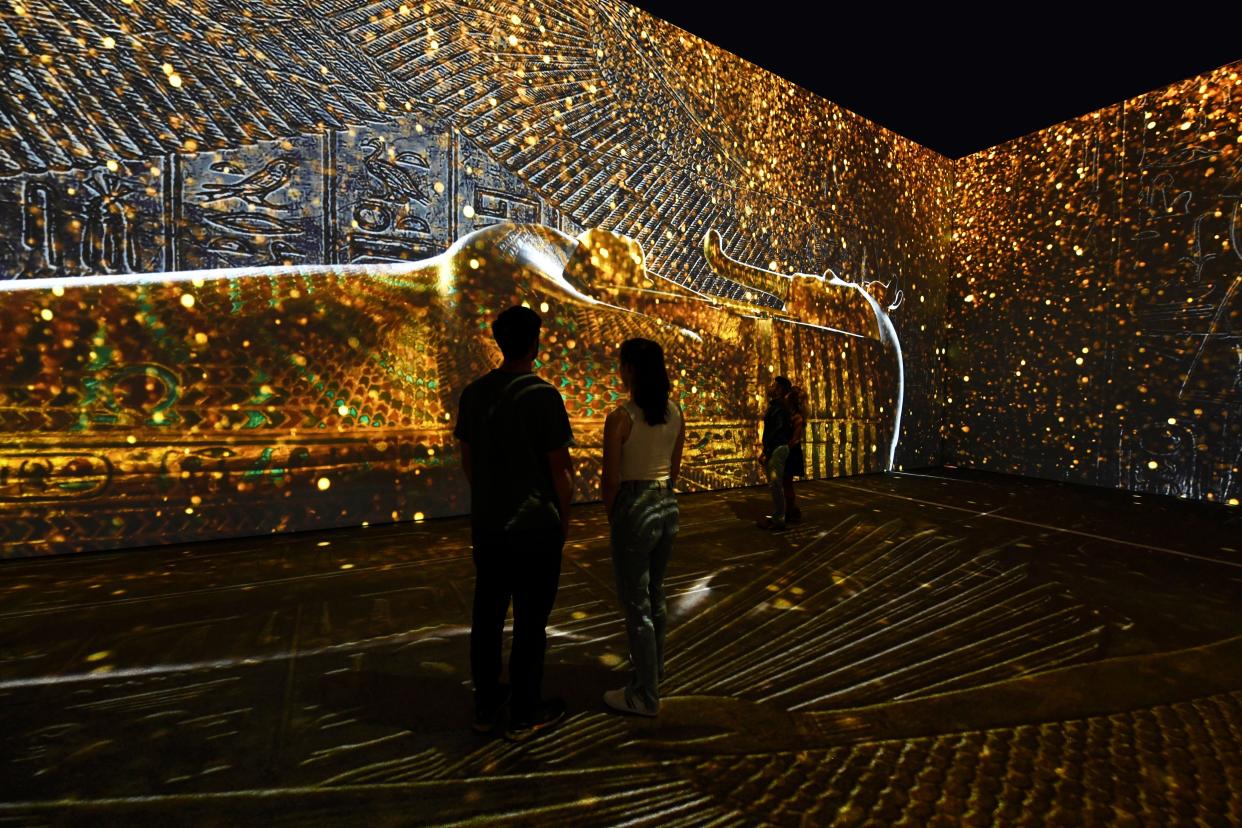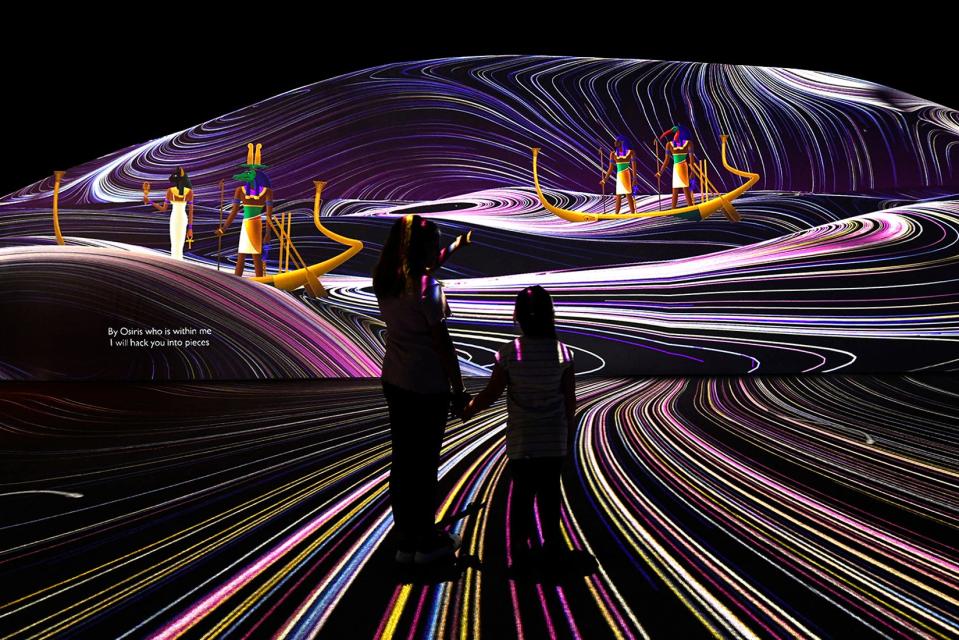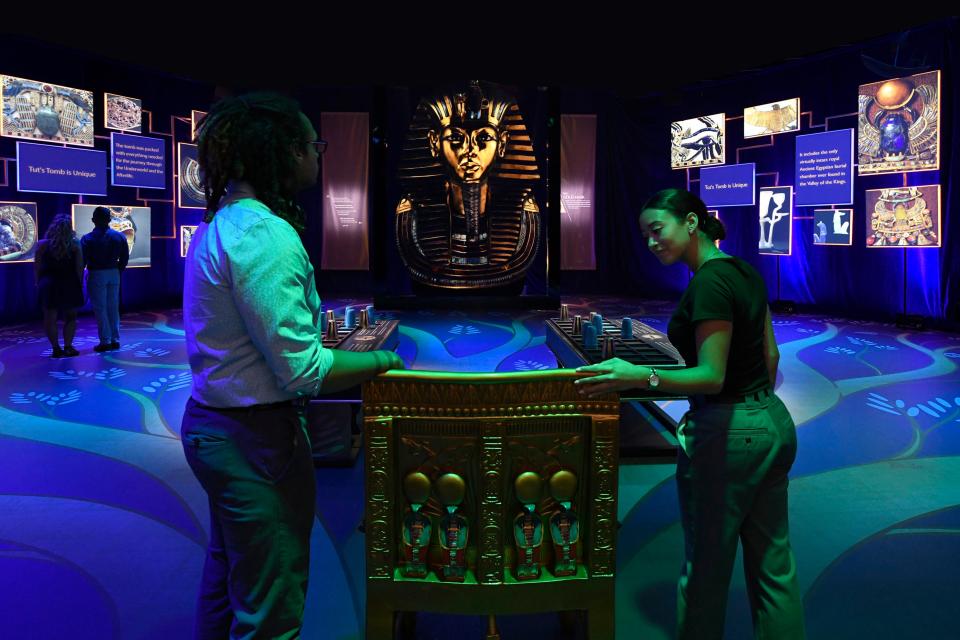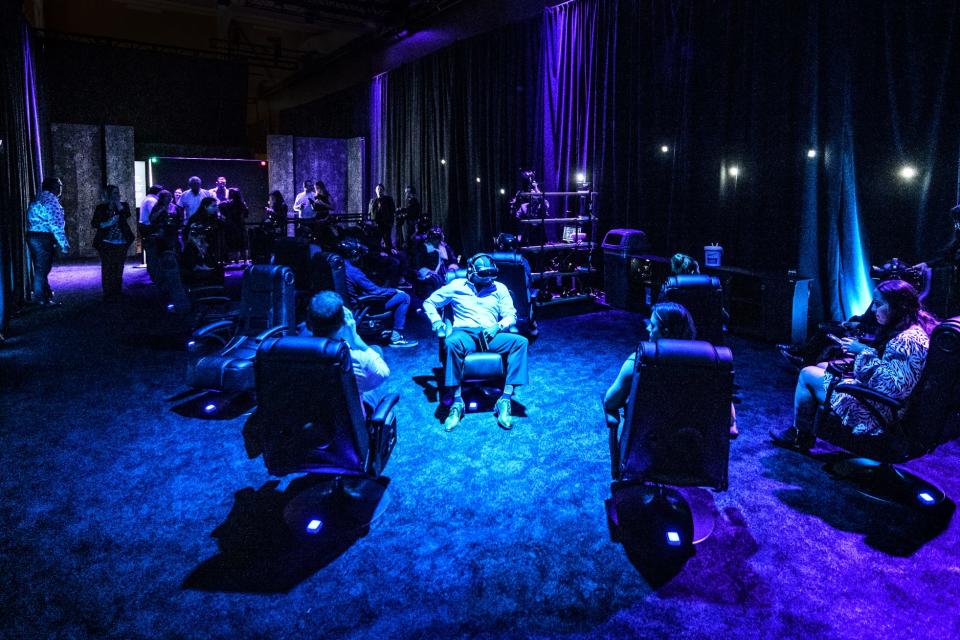How visitors at the 'Beyond King Tut' exhibit at Milwaukee's Baird Center will experience a sense of discovery

Milwaukee's Baird Center (formerly the Wisconsin Center) has been the site of a few immersive exhibitions over the past few years, including "Beyond Van Gogh" in 2021 and "Beyond Monet" in 2022.
The newest immersive experience, National Geographic's "Beyond King Tut: The Immersive Experience" — which is at the Baird Center Oct. 13- Jan. 6 — is different.
"Van Gogh and Monet were more about losing yourself in the works of an artist," said Mark Lach, the creative producer for the King Tut exhibit. "This experience is much more about storytelling."
The exhibit's story features a few different main characters as visitors wind their way through nine multisensory galleries.
The exhibition starts with a short film explaining some of the details of King Tut's life, including that he became king when he was only 9, upon the death of his father, and that he died very young, at only 19.
Because he was a "boy king," Tutankhamun's rule was dominated by a group of advisors, who dismantled some of the decisions made by his father, Akhenaten, who is considered a much more significant Egyptian king. For example, Akhenaten had established a monotheistic religion in Egypt; under King Tut's rule, polytheistic worship was returned.

Following the film, visitors can make their way through a maze of walls on which photographs of some of the objects that were found in King Tut's tomb are projected. This is when the story's main characters become British archaeologist Howard Carter and his team, who discovered King Tut's tomb in what is known as Egypt's Valley of Kings in 1922.
Throughout the exhibit, visitors are able to read signs to explain what they see; there is also an audio tour, which visitors can access by scanning QR codes with their phones.
"Here, we want visitors to feel that sense of discovery that the archaeologists would have felt," Lach said.
Here is also where visitors can learn why a relatively obscure king became synonymous with ancient Egypt for scores of modern people. While the grander tombs of more significant rulers were robbed and disturbed throughout the centuries, Tut's is one of the few intact tombs of Egyptian royalty to have been discovered.
In the experience, visitors see photos and recreations of what the tomb looked like when it was found. Archaeologists theorize that the first chamber might have been discovered by robbers who were interrupted in their looting. The other two chambers — including the king's burial chamber and his mummy — were undisturbed.
At the end of the maze is a gallery where King Tut again becomes the main character. During a short film, which is projected onto the walls, visitors learn the meaning of the hieroglyphs on the walls surrounding King Tut's tomb. They describe the journey to the afterlife that the king was believed to have taken following his death.

In the next room, visitors can encounter photos of some of the objects that were discovered in King Tut's tomb.
"All these objects were things the king used in his personal life, that were part of the ceremonies when he died or that would accompany him into the afterlife," Lach said.
There's also a replica of a throne that people can sit in for photo opportunities and a large re-creation of a game called senet that was found in the king's tomb. People are also free to play the game.
Science takes center stage in the next gallery, where the process of mummification is described. That's followed by a room with a replica of King Tut's mummy, as well as projections of the CT scan images that were taken of the mummy in 2005.
"In the 1970s, the king's skeleton was x-rayed, and a dark spot was found in the skull, which was believed to have been as a result of blunt force trauma, so people thought that was how he died," Lach said. "But the CT scan revealed that the dark spot was actually embalming fluid."
Lach also said the CT scan revealed a knee fracture, which has led to speculation that King Tut might have died as the result of an infection from an injury.
The next gallery is "the big wow" factor, as Lach described it.
In this large gallery, people can sit on benches or on a boat in the middle of the room — Lach noted that children often sit in the boat. This room can only be described as immersive, both because of the environment, which is completely surrounded by video projections, and because of the video itself — an animated story of what ancient Egyptians believe would have happened to King Tut after he died, as he journeyed through the Netherworld, encountering gods, goddesses and beasts, making his way to immortality.

After walking through the retail store, there is one last "wow factor" — a virtual reality experience, complete with moving chairs. The VR film is narrated by "King Tut" as he takes viewers on a tour of his tomb and explains how he became famous.
King Tut tickets, schedule in Milwaukee
Tickets start at $29.99 for adults, $23.99 for kids ages 5 to 15 and $24.99 for students, seniors and military members. Kids under 5 are admitted free. Tickets can be purchased through the website, beyondkingtut.com. The self-guided experience is estimated to take about an hour to go through. The experience will be at the Baird Center, 400 W. Wisconsin Ave., Oct. 13 through Jan. 6.
RELATED: Outdoor music, arts and more things to do in the Milwaukee area in fall 2023
This article originally appeared on Milwaukee Journal Sentinel: King Tut Milwaukee exhibit at Baird Center immerses visitors in tale

